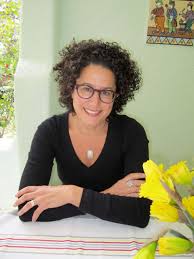Frazee, Marla
Getting to Know Marla Frazee
Marla Frazee has been intrigued with illustration ever since she first encountered picture books. “I loved to get lost in the story the pictures were telling me. I could read that visual narrative all by myself which made it both private (no grown-up necessary!) and magical (I was too young to read words).”
Her career began with a brief stint working on another form of visual storytelling: animation. “My first job out of ArtCenter College of Design in Pasadena, CA, was at Disney Studios… I was so excited. I’ve been fascinated by animation since I was a kid and it seemed to me that this was the beginning of something. But I’d also been certain that I would illustrate children’s books. So after six weeks of trying to get up to speed (I wasn’t trained in animation at all), I left my one and only job-with-benefits and started out on the long road to getting published.”
Animation continues to inspire her. Like an animator, she often draws sequences of images that suggest action. For example, in Boot & Shoe, to show two dogs running after a squirrel, she uses multiple sequential drawings of the animals, giving readers a sense of the wild chase.
The kind of storytelling that captivated Marla as a child is an important feature of her artwork today, whether she illustrates her own text or someone else’s (or a wordless book such as The Farmer and the Clown). “The visual narrative is not only accessible, but it is skillfully understood by children who haven’t yet learned to read. They are experts at reading pictures. They will see every detail, follow every story line (even those that may be peripheral to the main story line), and find every mistake, darn it! There is no other group of readers that I’d rather be illustrating for.”
Marla does feel there’s a difference between illustrating another author’s manuscript and working on her own. “When I illustrate someone else’s text, the words serve as a kind of safety net under my process. I can try all sorts of illustrative acrobatics, and if it doesn’t work, I’ll fall softly into the net and I can get back up and try something else. But if I’m doing both the writing and illustrating, it often becomes hard to sort out which component isn’t working when and if it goes haywire. It’s a bit more nerve wracking because the whole project can fall apart — and often has. But I love both of these processes. It works for me to alternate them. The manuscripts I am drawn to are intriguing puzzles that I want to figure out.”
A somewhat different technique was required for illustrating the Clementine chapter books, by Sara Pennypacker. “I based the look of the Clementine [series] on the Beverly Cleary books that were illustrated by Louis Darling. And I try to illustrate the moments in the text that will deepen the emotion, add humor, and, when necessary, provide visual aids.”
Anyone who follows Marla’s work will notice that babies show up quite often, in titles such as Walk On!: A Guide for Babies of All Ages, The Boss Baby (which became a movie), and The Bossier Baby. Babies do make very good subjects. “Practically everything they do is a new thing for them! I love that. And they are chunky, round-headed, have crazy hair, and wear the best clothes.”
In addition to the babies, there are plenty of lively, expressive characters in her illustrations. How does she come up with all those people? “I am terrible at keeping sketchbooks. When I’m not working on a project, I want to do other things besides drawing. But when I’m working, I will do whatever it takes to find the character. I may look through reference books or do my share of people-watching in crowded places or remember some idiosyncratic detail about someone I know.”
Marla is often listed as designer or co-designer of her books. “Honestly, I don’t know how to illustrate a book without designing it to a certain degree. The structure the visual story is built on is the most crucial part of picture-book-making, in my opinion. Where the page turns are, what the page layout is, where the text is placed – these are all important aspects of how to tell the story.” Integrating the whole book with her images can lead Marla to hand lettering the text, as she did in Stars and All the World.
Since her first picture book was published in 1990, Marla has worked on quite a variety of books. “I. . . am not that interested in doing what I’ve done before. So I am drawn to projects and subjects that pull me into places I haven’t been yet.” We’ll look forward to following along and exploring the new visual stories she creates.
Click Here for titles available in the BTSB Bookstore from this author

